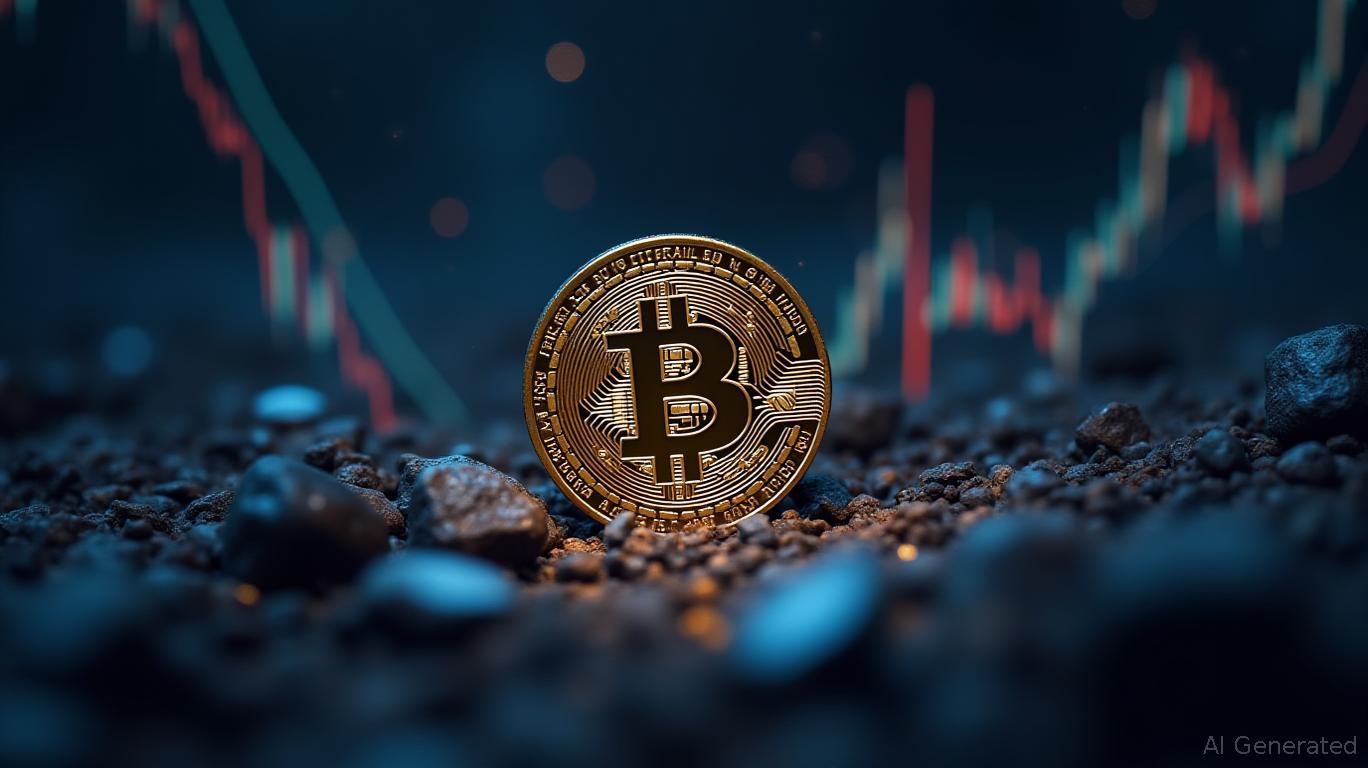LUNA Drops 13.02% Over the Past Week as Recovery Efforts Continue After Collapse
- LUNA dropped 13.02% in 7 days as of Nov 6, 2025, amid ongoing post-2022 collapse recovery efforts. - Terra 2.0 rebranded from algorithmic stablecoin model to governance-driven DeFi and payment solutions. - Financial analysts monitor LUNA's volatility as a case study for blockchain governance and ecosystem resilience. - The token's 80% annual price drop highlights risks in algorithmic models and decentralized finance adaptation.
As of NOV 6 2025,
LUNA, which serves as the primary token for the
Initially introduced within the
In response, Terra 2.0 was introduced—a revamped blockchain that abandoned the algorithmic stablecoin approach in favor of a governance-focused ecosystem. The updated LUNA now supports staking and protocol governance, but it no longer functions as a stabilizer for stablecoins. The project’s emphasis has shifted to decentralized finance (DeFi), payment infrastructure, and community-driven growth.
Even with these foundational changes, LUNA’s trading patterns continue to draw attention from market analysts. The 13.02% decline over the week ending NOV 6 2025 highlights persistent market volatility, though daily trading has remained relatively steady. Observers are watching for signs of a sustained rebound, especially as the DeFi sector and cross-border payment initiatives within the network expand.
Terra’s evolution has broader significance beyond its native asset. The platform has become a proving ground for blockchain governance, token economics, and the durability of decentralized finance. Analysts use Terra as a reference point to assess the effectiveness of algorithmic models, governance frameworks, and strategies for ecosystem growth.
Although the network’s move from a stablecoin-based system to one centered on decentralized applications (DApps) has not erased the memory of its 2022 collapse, it has made Terra an important case study. Changes in LUNA’s price and governance are closely monitored as reflections of user confidence, market outlook, and the network’s ability to adapt technologically.
Backtest Hypothesis
To assess how the Terra ecosystem has recovered since its crisis, a backtesting strategy can be employed to review LUNA’s historical performance during significant market downturns. Typically, an event is defined as any day when the closing price drops by at least 10% compared to the previous day. By pinpointing all such occurrences from 2022 to 2025, one can track the token’s recovery patterns and volatility.
This event-based analysis can be extended to LUNA and other digital assets for comparison. It provides a detailed look at how LUNA reacted to abrupt market declines, the duration of its recovery, and whether its post-crisis behavior diverges from trends seen before 2022. The backtest also offers insights into the effects of governance reforms and ecosystem changes introduced with Terra 2.0.
Disclaimer: The content of this article solely reflects the author's opinion and does not represent the platform in any capacity. This article is not intended to serve as a reference for making investment decisions.
You may also like
XRP News Today: Ripple Injects $500M to Advance 'Internet of Value' Ambition, Reaching $40B Valuation
- Ripple secures $500M funding at $40B valuation, led by Fortress and Citadel, boosting institutional confidence in its blockchain and stablecoin solutions. - RLUSD stablecoin reaches $1B market cap, powers $95B+ cross-border payments, and expands institutional services via Ripple Prime's collateral management. - Strategic acquisitions and Mastercard-Gemini partnership using RLUSD on XRP Ledger aim to redefine instant settlement and bridge blockchain with traditional finance. - Ripple's valuation growth to

Industries Drive Machine Independence, Yet Human Collaboration Remains Essential
- Thermo Fisher expands cell therapy automation in NJ, cutting lead times 40% and achieving 99.8% batch consistency via AI and closed-system tech. - Mimic Robotics raises $16M for AI-driven dexterous hands that replicate skilled labor, addressing manufacturing labor shortages through wearable sensor data. - Foxconn deploys humanoid robots for AI server production in Texas, while CVTE showcases commercial robots at Canton Fair with APAC/EU partnerships. - Schaeffler partners with Neura Robotics to integrate

Solana News Update: Grayscale Reduces GSOL Fees and Increases Staking Incentives in Response to Bitcoin ETF Withdrawals
- Grayscale waives GSOL management fees and cuts staking fees for 3 months or until $1B AUM, boosting investor returns. - GSOL offers 7.23% gross staking rewards (6.60% net) to compete in crypto ETF market amid Bitcoin fund outflows. - Strategic shift diversifies Grayscale's offerings beyond Bitcoin, leveraging Solana's institutional appeal and low-cost structure. - Unregistered fund structure and staking risks like liquidity constraints remain concerns despite real-time reward transparency.

Bitcoin News Today: "Major Institutions Bolster Bitcoin’s $100K Support Amid Growing Bearish Sentiment"
- Bitcoin struggles to hold above $100,000 as price dips below $109,500, triggering sell orders and testing critical support zones. - Analysts split between viewing the correction as temporary or a deeper bearish shift, with Plan B's model projecting $250,000–$1M fair value. - Institutional buying dominates amid $797M ETF outflows, while Fed hawkishness and whale transfers fuel sell-off speculation. - Bullish arguments cite structural support and ETF accumulation, but bearish indicators include rising exch
